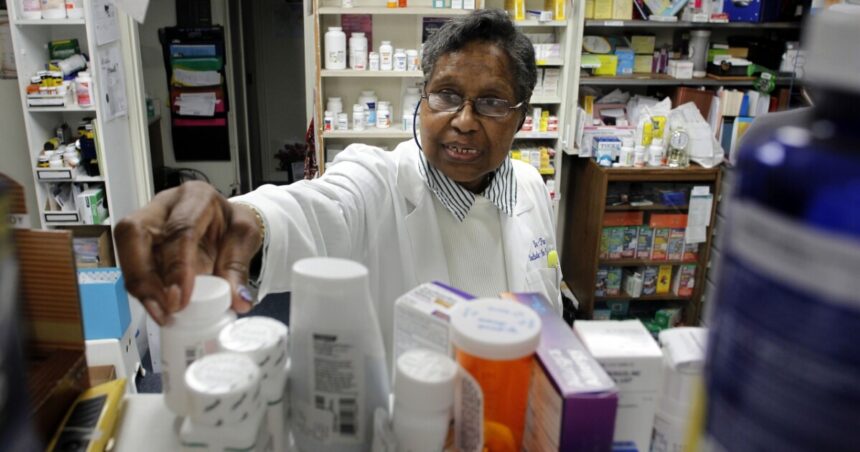The cost of prescription drugs in the U.S. has increased by 37% in the last decade, surpassing the rate of inflation and causing financial difficulties for Americans trying to afford their medications, according to newly released tracking data.
GoodRx’s data for this year indicates a slowing down of the price spikes in medications that have been observed since 2014, with the highest increase being 39% in early 2023. However, the drug savings company warns that the impact is long-lasting, with many Americans finding themselves in a challenging situation known as the “Big Pinch.”
GoodRx describes this phenomenon as the current reality for most Americans, who are now responsible for a higher portion of their drug costs due to insurance companies covering fewer prescriptions, including in Medicare plans, and imposing restrictions on routine drugs that were previously covered.
Prior to 2010, more than 70% of medications were covered by insurance and about 25% were restricted in some way, as shown by GoodRx’s data. Currently, nearly equal percentages of medications are covered (54%) and restricted (50%) as of 2024.
With reduced coverage comes increased out-of-pocket expenses. On average, Americans are spending $16.26 out-of-pocket per prescription, with 24% of individuals spending over $50 monthly and 10% spending over $100.
Related: Florida can import cheaper prescription drugs from Canada, FDA says
These financial pressures are leading Americans to choose between leaving their prescriptions unfilled or paying extra to obtain their medications. According to GoodRx’s data, 32% of Americans, or approximately 51 million people, have abandoned prescriptions at the pharmacy due to high costs.
In addition to fewer covered medications and increased restrictions, patients are facing higher copays, coinsurance, and deductibles. The average deductible cost has nearly doubled from $917 in 2014 to $1,644.
“The lack of significant price reductions, along with diminished insurance coverage, has significant consequences for patients,” GoodRx states in its report. “Many individuals are experiencing financial strain from paying out-of-pocket for medications, especially as insurance plans cover fewer drugs and impose stricter conditions on the medications they do cover. This situation results in rising out-of-pocket costs, medication nonadherence, delayed care, poor health, and inequitable access to healthcare.”
GoodRx highlights that efforts by lawmakers and pharmaceutical manufacturers to reduce barriers to medications have not been sufficient.
Related: White House to propose Medicare prices for 10 popular drugs
On the same day that the company released its data, the U.S. Department of Health and Human Services announced reduced prices on 64 drugs for certain Medicare beneficiaries. This action was made possible by President Biden’s Inflation Reduction Plan, which mandates drugmakers to provide rebates to Medicare if their drug prices increase faster than inflation.





